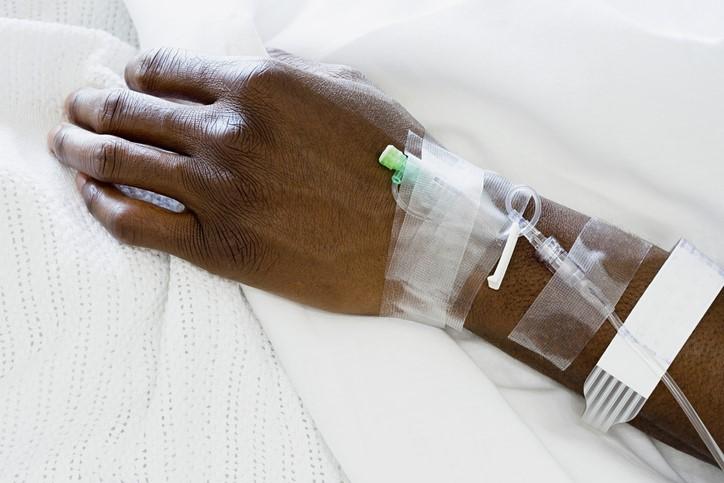After adjusting for sociodemographic factors and underlying conditions, black COVID-19 patients were no more likely than white patients to die of any cause in hospitals, a retrospective study published today in JAMA Network Open has found.
Researchers at Ascension Health in St. Louis analyzed data from 11,210 adults with COVID-19 in 92 hospitals in 12 states from Feb 19 to May 31.
The death rate from any cause was 23.1% in white patients and 19.2% in black patients. After adjusting for age, sex, insurance, underlying conditions, neighborhood deprivation, and site of care, the risk of death was not significantly different between blacks and whites (hazard ratio [HR], 0.93; 95% confidence interval [CI], 0.80 to 1.09).
Underlying illnesses, sociodemographics
Compared with whites, blacks had higher rates of asthma (8.8% vs 4.7%), cancer (3.6% vs 3.2%), chronic kidney disease (20.5% vs 12.9%), congestive heart failure (12.5% vs 10.8%), diabetes (32.0% vs 23%), high blood pressure (30.3% vs 25.0%), obesity (32.2% vs 18.2%), and organ transplantation (0.5% vs 0.3%).
Compared with hospitalized whites, black patients were more likely to have been admitted to the hospital with a fever of 38°C (100.4°F) or higher (32.1% vs 22.1%) and a respiratory rate of at least 24 breaths per minute (34.1% vs 29.6%), while they were less likely to have an oxygen saturation less than 94% (34.9% vs 40.9%).
Black and white patients required hospitalization in an intensive care unit (ICU) and invasive mechanical ventilation at similar rates (31.2% vs 34.0%).
All-cause death rates were 20.3% overall, 34.7% among ICU patients, and 38.1% among those receiving mechanical ventilation. The death rate among white patients was 23.1%, while it was 19.2% among black patients.
Of ICU patients, 36.4% of white patients and 35.2% of black patients died. Of those receiving mechanical ventilation, 39.0% of white patients and 38.2% of black patients died.
Patients with Medicare insurance (HR, 1.47; 95% CI, 1.08 to 2.00) and those without insurance coverage data (HR, 2.17; 95% CI, 1.32 to 3.57) were at higher risk for death than those with commercial insurance.
Of the 11, 210 patients, 4,180 (37.3%) were black. Black patients were younger than white patients (median age, 61 vs 66 years), more likely to have Medicaid insurance (24.7% vs 13.3%), and had higher median scores on the Neighborhood Deprivation Index (0.82 vs -0.11) and the Elixhauser Comorbidity Index (22 vs 21).
Hospitals included in the study were located in Alabama (6 hospitals), Florida (5), Illinois (8), Indiana (14), Kansas (4), Maryland (1), Michigan (13), New York (2), Oklahoma (6), Tennessee (4), Texas (11), and Wisconsin (18).
Overall risks, those for hospitalized patients
While current reports suggest that blacks shoulder a disproportionate burden of COVID-19 infections and deaths (21% vs 13%), the authors noted that local, state, and territorial reports to the Centers for Disease Control and Prevention are missing about 55% of race data.
They said that living conditions, workplace differences, and underlying medical conditions may help explain why ethnic minorities appear to bear a disproportionate burden of COVID-19 illness and death overall. But their findings, they added, confirm those of previous studies in Louisiana and Georgia that found no difference in death rates by race in hospitalized COVID-19 patients.
"Taken together, these findings suggest that while Black US residents may be at higher risk of contracting COVID-19 and represent a disproportionate share of COVID-19 death, mortality for those able to access hospital care does not differ from White patients," the authors wrote.




















